Building Up to Directed Research on TCI
In early February 2017, students arrived to South Caicos with a sense of wonder and excitement. In a short period of time, they have been introduced to the array of marine science and environmental conditions that the Center and the marine environment have to offer. During the first few weeks, students have been attending classes in Marine Ecology, Resource Management and Environmental Policy. The classroom lectures are intermingled throughout the days with field exercises and identification exercises to provide a holistic approach to research that is undertaken with the school. After a solid base of the classroom briefings and instructions, the students were ready to initiate their field work by learning and participating in a Conch Visual Survey. The Conch FEX is a hands-on activity that allows the students to grasp the concepts of research by putting these skills to use in the marine environment.
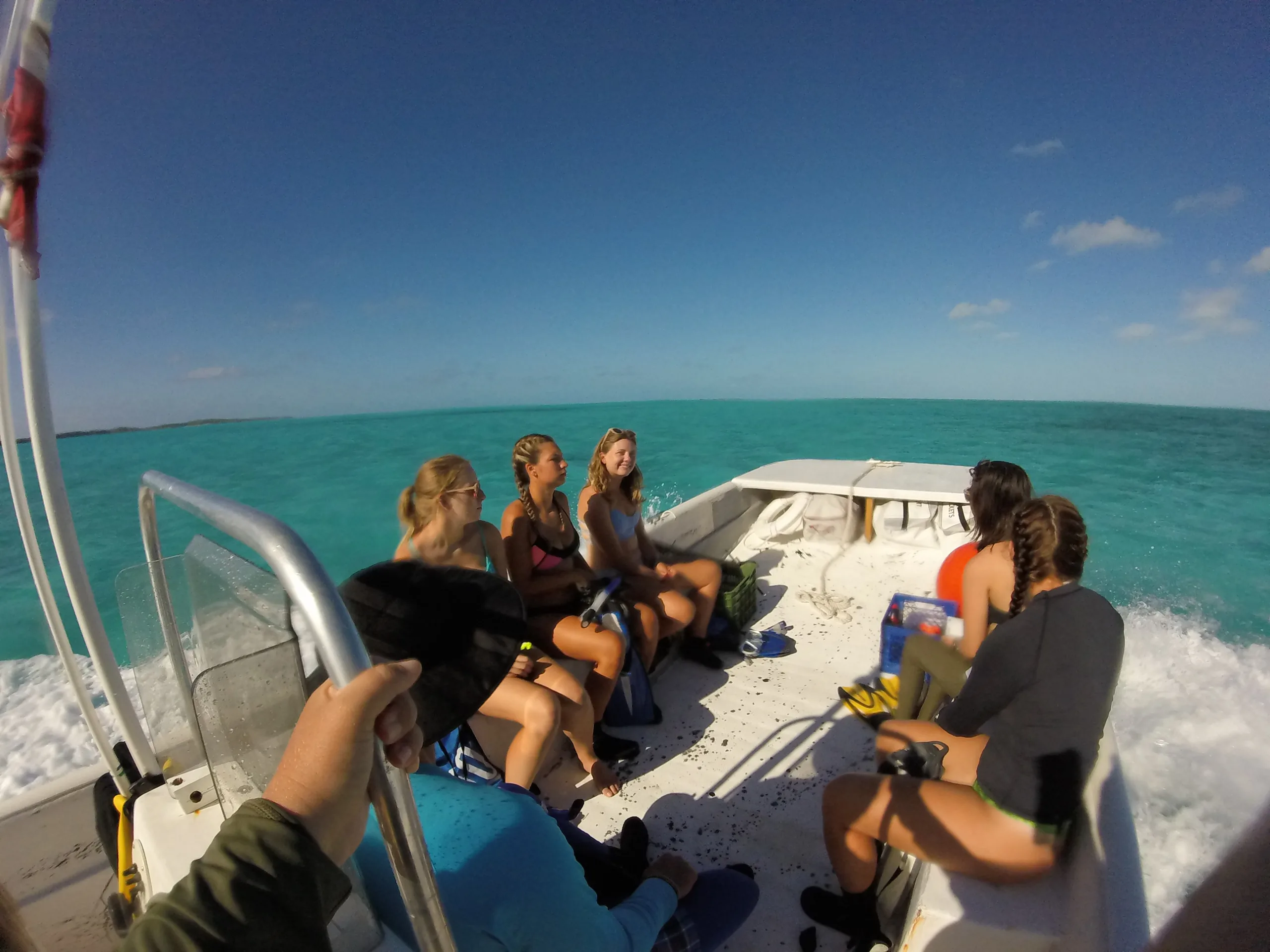
Students heading out to the Conch Assessment field exercise (all photos courtesy of Kathy Lockhart)
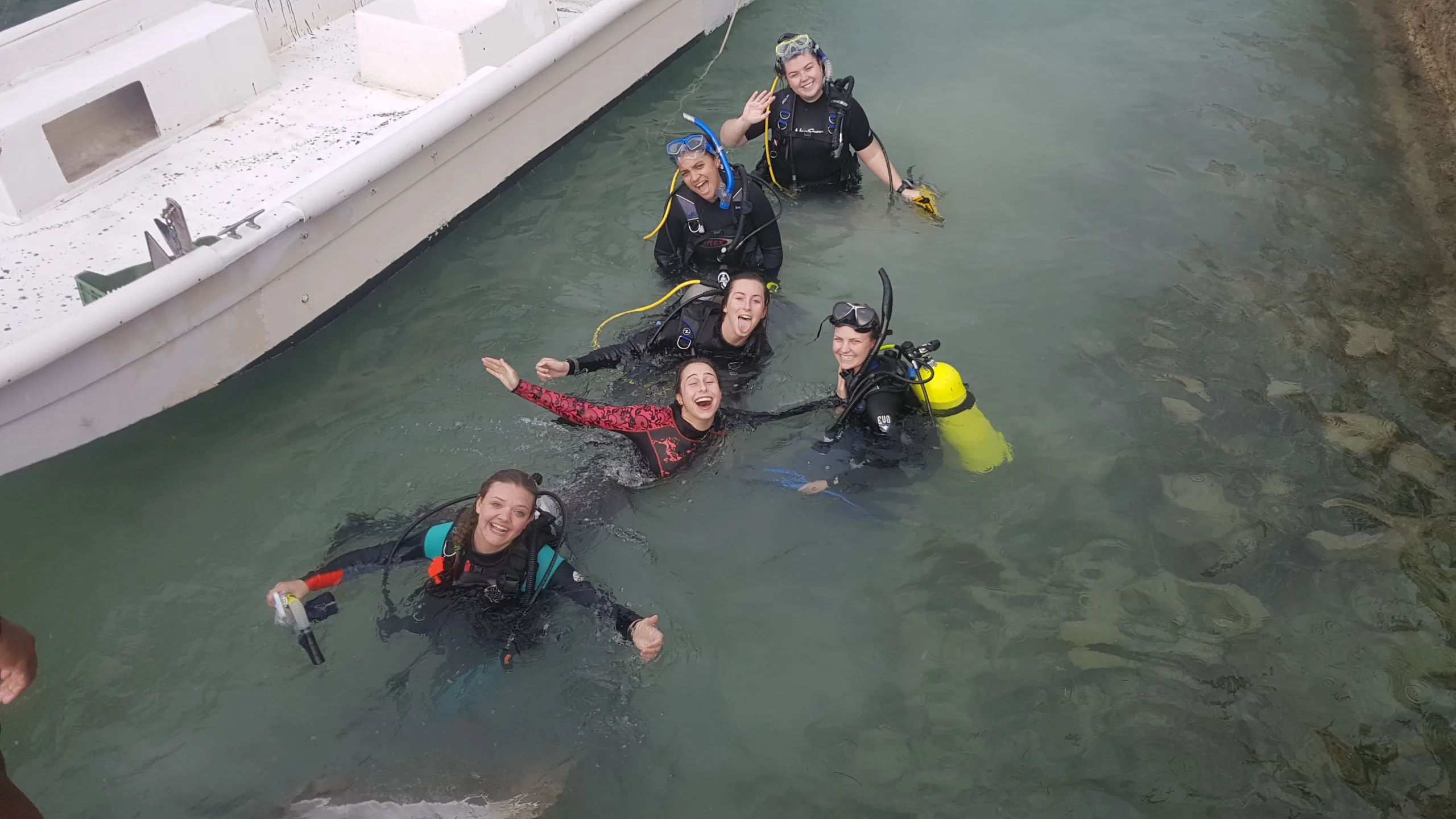
Students laying out a 50 meter transect for the Conch Assessment exercise
For two and a half days the students conducted three belt transects at 24 different sites located both inside and outside the East Harbour Lobster and Conch Reserve (EHLCR), South Caicos, TCI. Thirty-three students with masks, fins and snorkels conducted underwater visual surveys (UVS) that were 50 meters in length and 3 meters in width. Each transect consisted of determining the habitat type, number of dead conch and number alive. The number of conch observed at each of these sites ranged from zero to more than 240 conch. Once the conch were found alive, they were brought back to the boat for further measurement on each individual including siphonal length and lip thickness. It is through exercises like these that the students practiced their free-diving skills and identified habitat types, counted individuals and investigated other species that were found in the area. It is these types of exercises that prepare the students for their Directed Research activities that are starting soon.
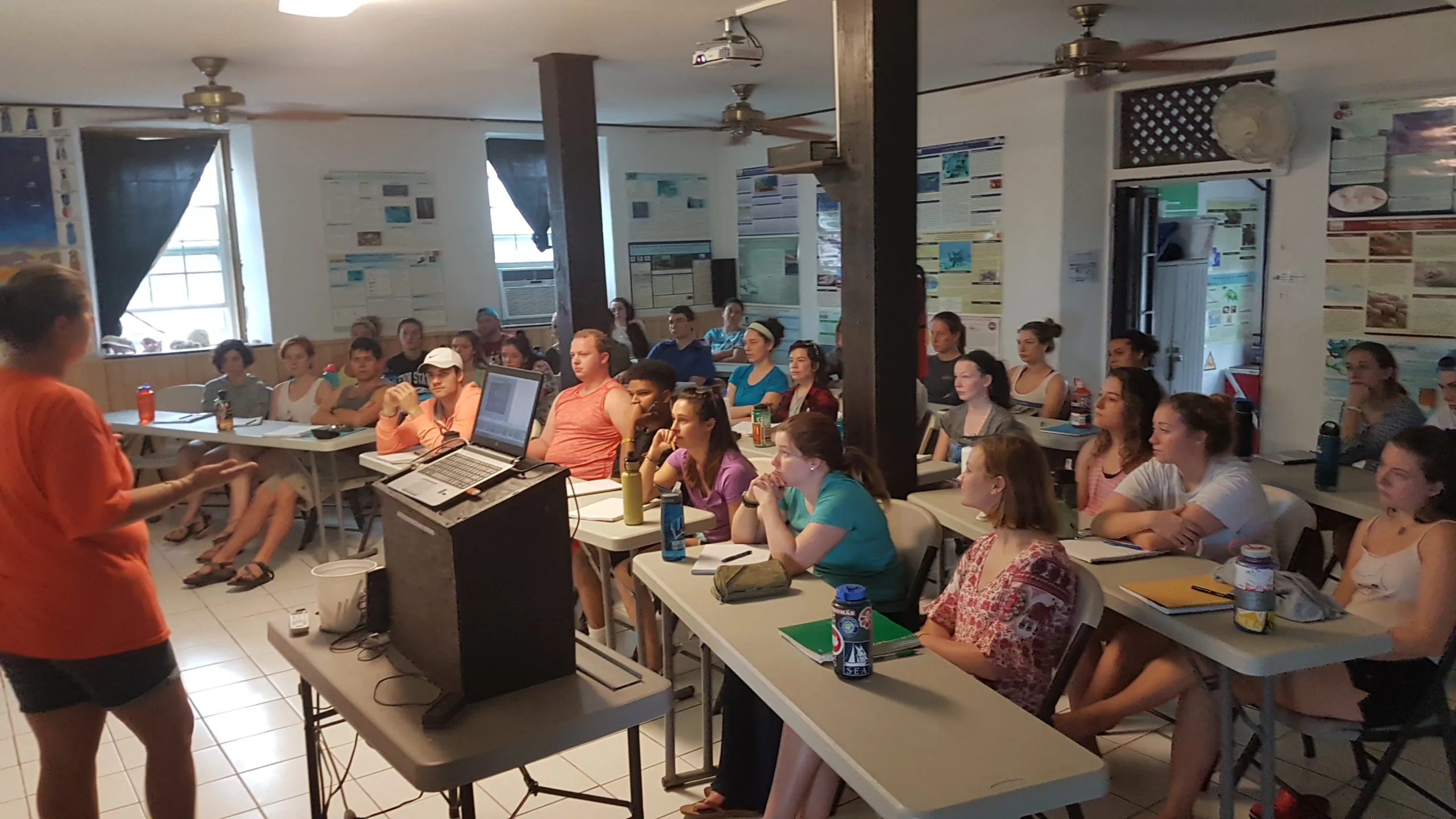
Students laying the transect
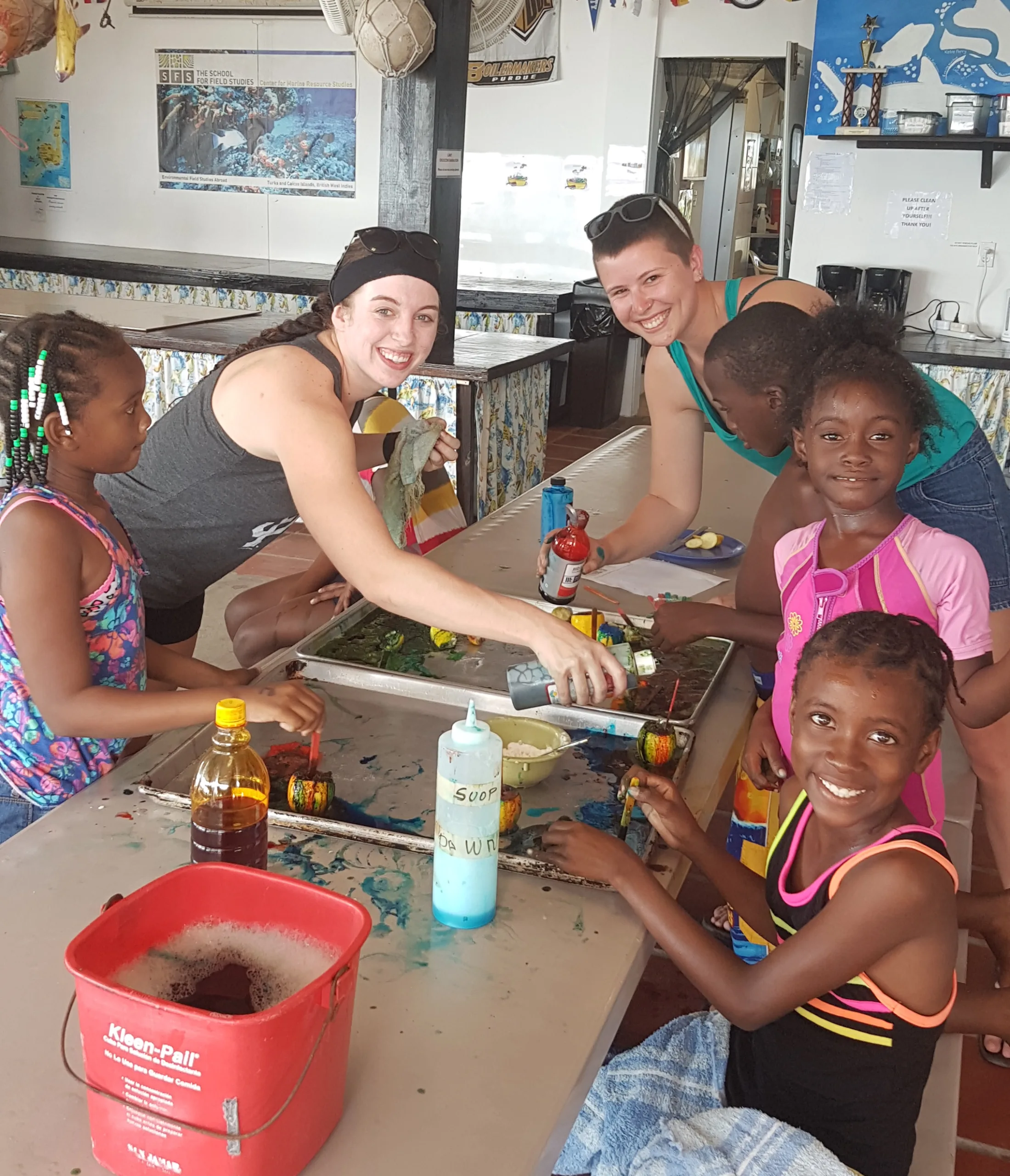
Students checking the transect for live Queen Conch
The Directed Research projects are all unique and exciting; covering areas of marine ecology, resource management and environmental policy. Within a week’s time, the students will have selected their projects and started to investigate the background of the project. Enthusiasm and excitement is building in each of the students as they are anticipating the future research projects. The projects range from habitats of the various shark species, management of the fin-fishery, opportunities of the sea cucumber as a fishery, benthic development of the coral reefs, history of the queen conch middens, bird and iguana habitat and tourism expectations of the TCI. The personnel at CMRS have been working with all the students to assist them in the design and development of their projects for the preparation of scientific research. Each project will have a unique focus, but all will involve hands-on field techniques, analyzing data and producing a compulsory report at the end of the project.
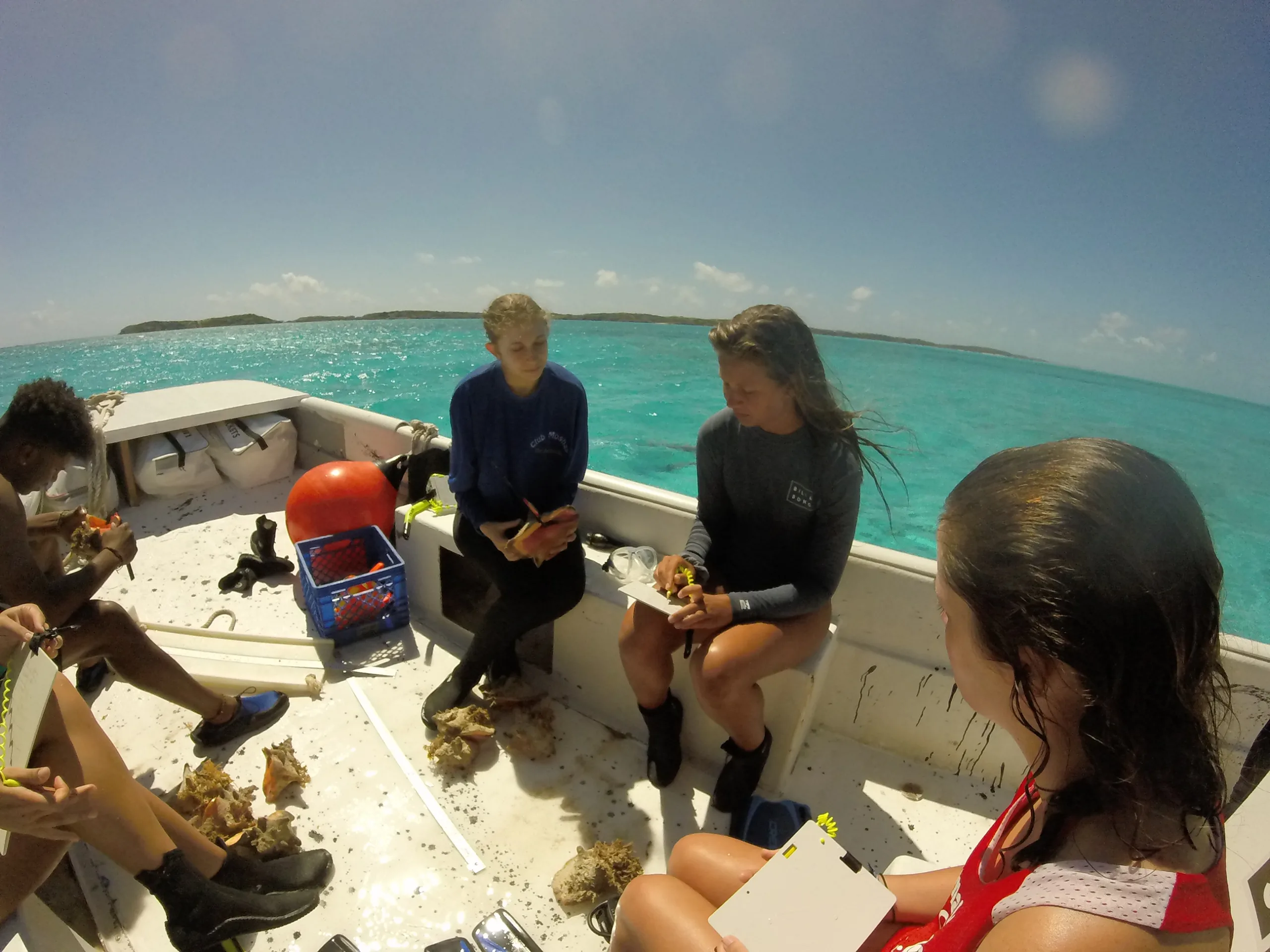

Students measuring Queen Conch for siphonal length (mm)
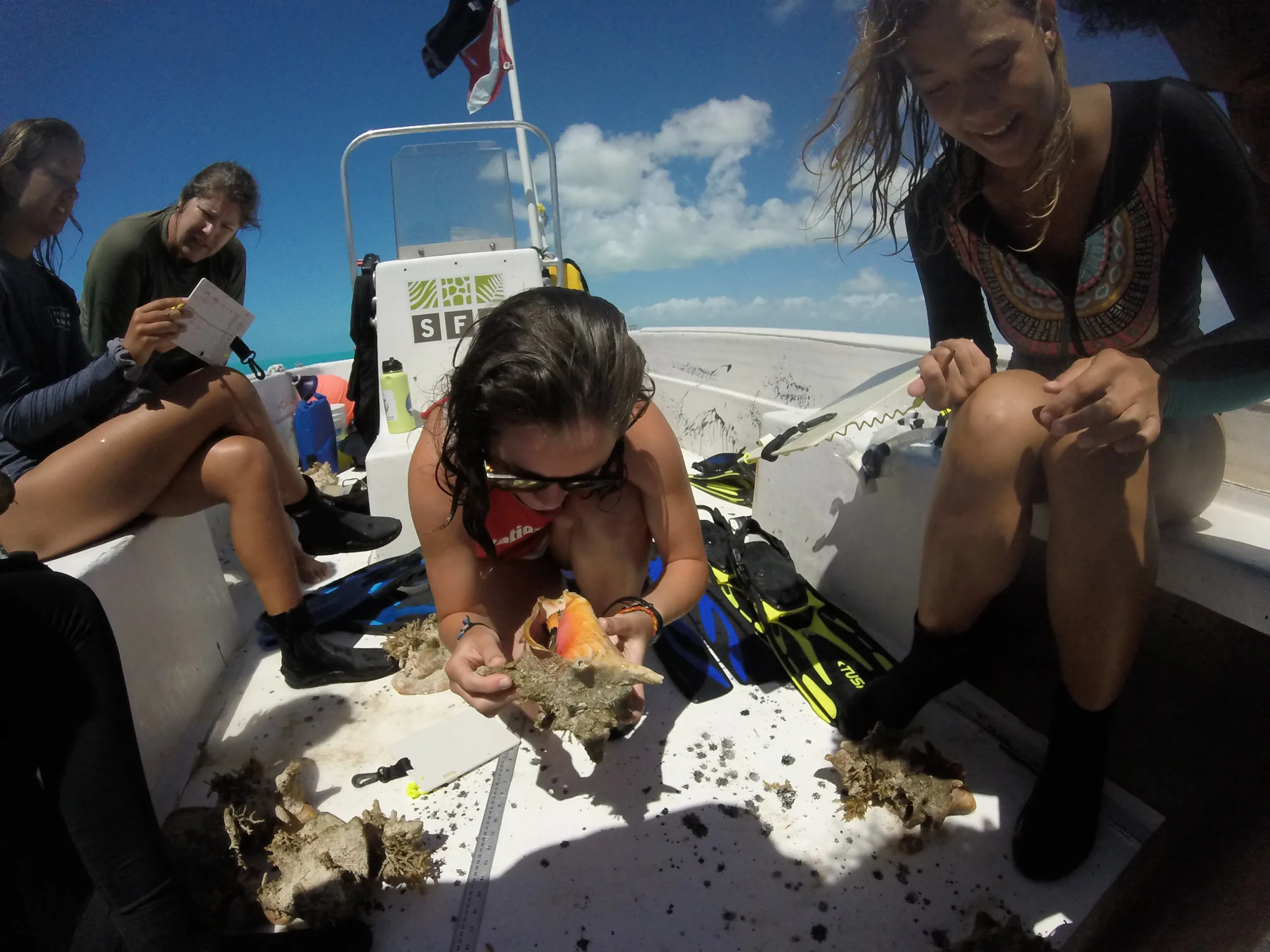
Students checking out the live Queen Conch protection within the shell
Related Posts


Alumni Reflections: Stories of the Return to Kenya
